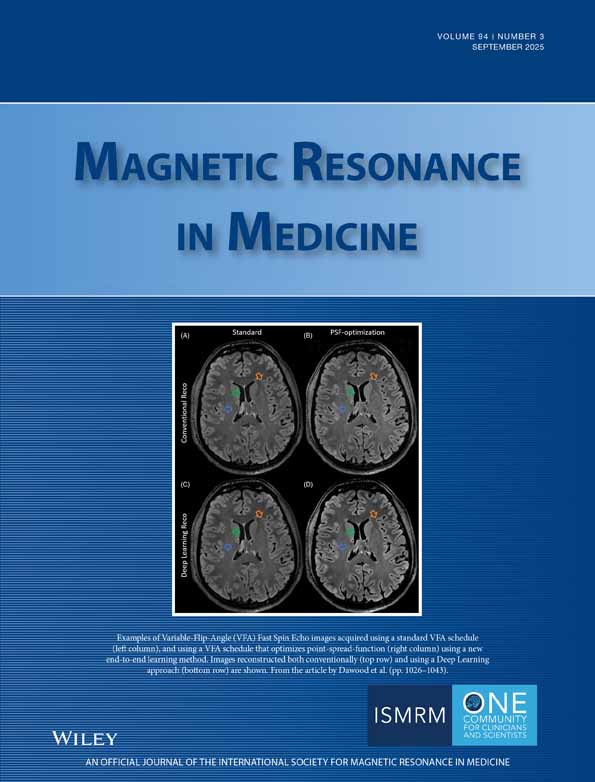T2 of articular cartilage in the presence of Gd-DTPA2−
Abstract
T2 information and delayed gadolinium-enhanced MRI of cartilage (dGEMRIC) are both used to characterize articular cartilage. They are currently obtained in separate studies because Gd-DTPA2− (which is needed for dGEMRIC) affects the inherent T2 information. In this study, T2 was simulated and then measured at 8.45 T in 20 sections from two human osteochondral samples equilibrated with and without Gd-DTPA2−. Both the simulations and data demonstrated that Gd-DTPA2− provides a non-negligible mechanism for relaxation, especially with higher (1 mM) equilibrating Gd-DTPA2− concentrations, and in areas of tissue with high T2 (due to weak inherent T2 mechanisms) and high tissue Gd-DTPA2− (due to a low glycosaminoglycan concentration). Nonetheless, T2-weighted images of cartilage equilibrated in 1 mM Gd-DTPA2− showed similar T2 contrast with and without Gd-DTPA2−, demonstrating that the impact on T2 was not great enough to affect identification of T2 lesions. However, T2 maps of the same samples showed loss of conspicuity of T2 abnormalities. We back-calculated inherent T2's (T2,bc) using a T2-relaxivity value from a 20% protein phantom (r2 = 9.27 ± 0.09 mM−1s−1) and the Gd-DTPA2− concentration calculated from T1,Gd. The back-calculation restored the inherent T2 conspicuity, and a correlation between T2 and T2,bc of r = 0.934 (P < 0.0001) was found for 80 regions of interest (ROIs) in the sections. Back-calculation of T2 is therefore a viable technique for obtaining T2 maps at high equilibrating Gd-DTPA2− concentrations. With T2-weighted images and/or low equilibrating Gd-DTPA2− concentrations, it may be feasible to obtain both T2 and dGEMRIC information in the presence of Gd-DTPA2− without such corrections. These conditions can be designed into ex vivo studies of cartilage. They appear to be applicable for clinical T2 studies, since pilot clinical data at 1.5 T from three volunteers demonstrated that calculated T2 maps are comparable before and after “double dose” Gd-DTPA2− (as utilized in clinical dGEMRIC studies). Therefore, it may be possible to perform a comprehensive clinical examination of dGEMRIC, T2, and cartilage volume in one scanning session without T2 data correction. Magn Reson Med 51:1147–1152, 2004. © 2004 Wiley-Liss, Inc.




